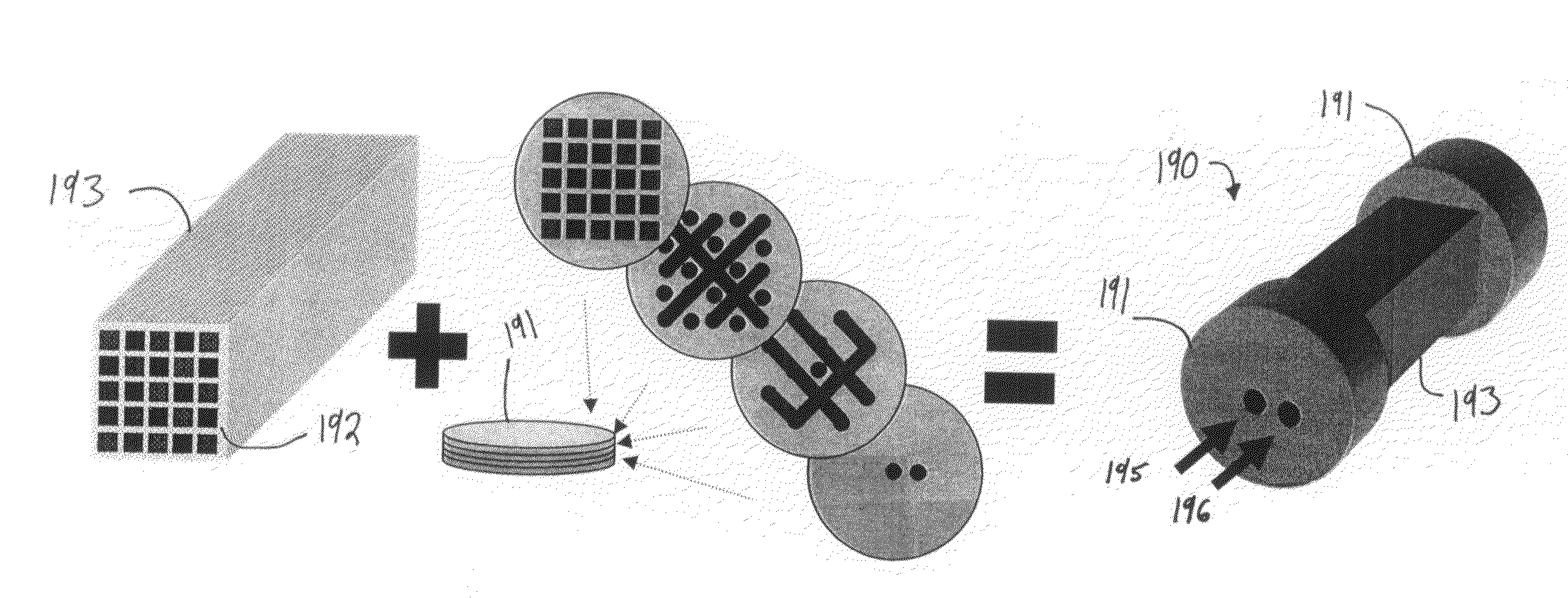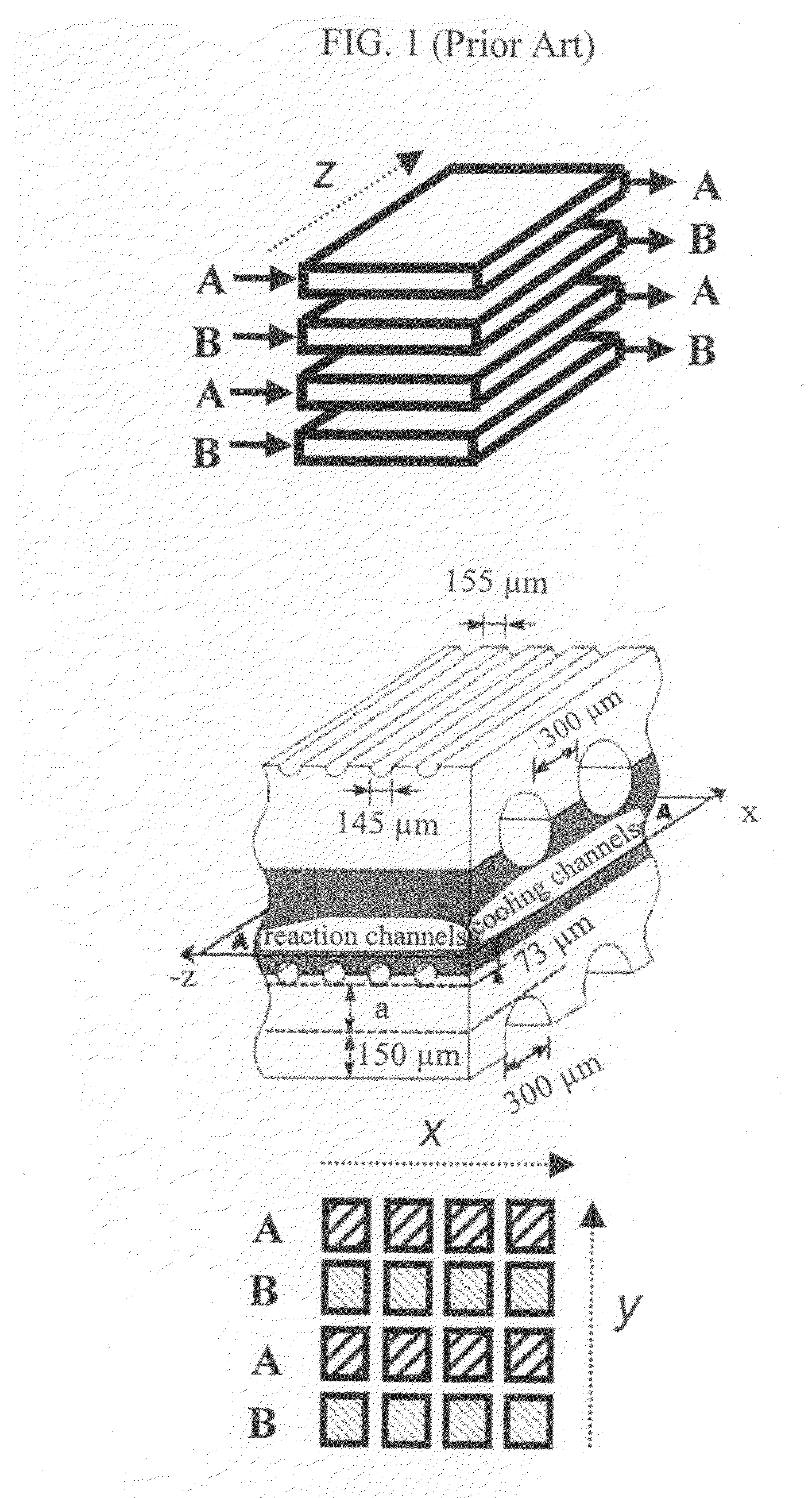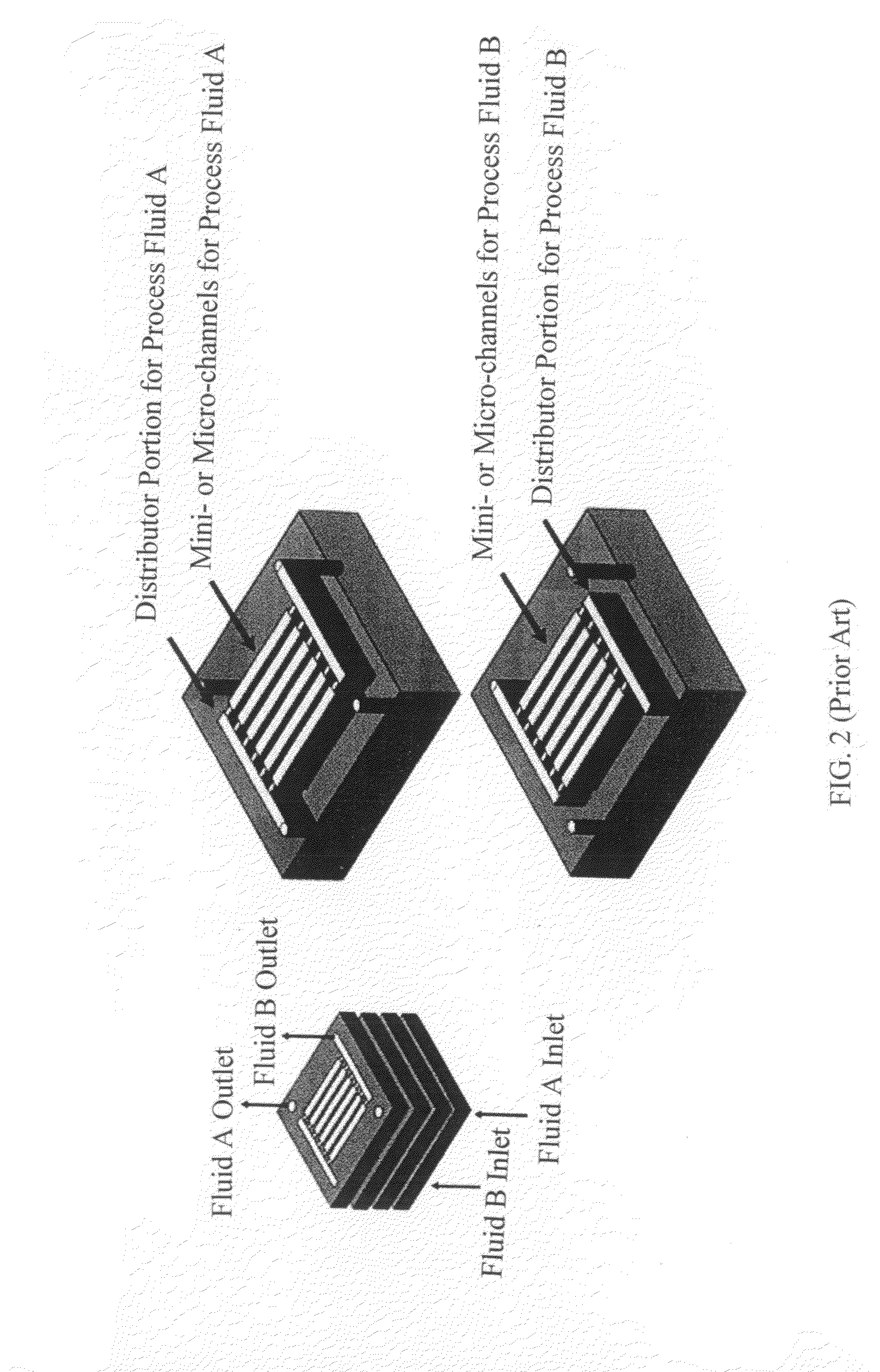Process Intensification In Microreactors
a microreactor and process intensification technology, applied in the field of chemical reaction devices, systems and methods, can solve the problems of limiting the potential for heat integration and process intensification, limiting the thermal efficiency of the necessary heat exchange, and the cost of system scale-up is typically linear, so as to achieve the effect of increasing the purity of carbon dioxide effluen
- Summary
- Abstract
- Description
- Claims
- Application Information
AI Technical Summary
Benefits of technology
Problems solved by technology
Method used
Image
Examples
example 1
All-in-One Hydrogen Extraction from Ethanol
[0092]In accordance with exemplary embodiments of the present disclosure, coupling of multiple membrane processes and catalytic reforming steps within a single unit was demonstrated, such that the overall system efficiency, portability and cost-effectiveness was increased substantially. The extraction of pure hydrogen gas from ethanol was accomplished in accordance with embodiments of the present disclosure by coupling multiple stage-wise catalytic membrane purification processes within a single structure. Composite membranes which included a dense palladium perm-selective film coated with a porous catalytic washcoat was employed for each stage of hydrogen extraction. For example, sufficient catalyst washcoat thicknesses ensure that corrosives are destroyed before reaching the palladium surface. As shown in FIGS. 21A-B, the system couples (i) catalytic steam reforming membranes in series with (ii) water-gas-shift membranes to extract hydrog...
example 2
All-in-One Hydrogen Extraction from Diesel
[0116]Reforming of logistics fuels to hydrogen for subsequent utilization in a fuel cell system in accordance with embodiments of the present disclosure includes multiple physical and chemical processes, including, without limitation, fuel vaporization, contaminant removal and high-temperature reforming stages. The need for autothermal operation (in the absence of external heat addition, typical of portable applications) generally requires additional exothermic reactions (e.g., combustion) to provide sufficient heat to maintain required reforming temperatures and supply vaporization heat. The mini- or micro-channel networks (e.g., ceramic mini- or micro-channel networks) described herein provide powerful tools for coupling all of these separate transport and kinetic processes within one single cartridge-based, highly efficient, reforming unit.
[0117]In exemplary embodiments, the present disclosure provides for an all-in-one hydrogen-from-dies...
PUM
| Property | Measurement | Unit |
|---|---|---|
| temperatures | aaaaa | aaaaa |
| thicknesses | aaaaa | aaaaa |
| thicknesses | aaaaa | aaaaa |
Abstract
Description
Claims
Application Information
 Login to View More
Login to View More - R&D
- Intellectual Property
- Life Sciences
- Materials
- Tech Scout
- Unparalleled Data Quality
- Higher Quality Content
- 60% Fewer Hallucinations
Browse by: Latest US Patents, China's latest patents, Technical Efficacy Thesaurus, Application Domain, Technology Topic, Popular Technical Reports.
© 2025 PatSnap. All rights reserved.Legal|Privacy policy|Modern Slavery Act Transparency Statement|Sitemap|About US| Contact US: help@patsnap.com



